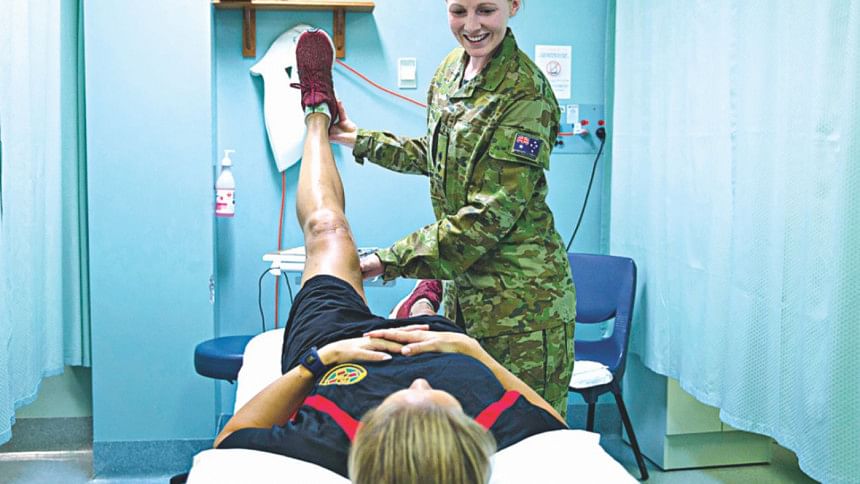Role of physiotherapy for military forces

Physiotherapy has a significant role for the military populations to maintain sound health and prevent injuries associated with physical training and sports. Nowadays qualified physiotherapists are working in military forces as a physiotherapy officer in many countries like Australia, Canada, United Kingdom and also in Bangladesh. Physiotherapy officers assess and treat force members for musculo-skeletal injuries and conditions. They design treatment plans for a variety of orthopaedic, cardio-respiratory, neuro-musculoskeletal and sports physiotherapy issues.
Common musculoskeletal problems of the military
Musculoskeletal injuries are a major problem in military populations. Physical training and recreational sports are the primary causes of these musculoskeletal injuries.
♦ Tibial bone stress reaction (pain on the shin area)
♦ Patellofemoral syndrome (injury resulting from the repetitive movement of the knee cap against the thigh bone)
♦ The iliotibial band friction syndrome (pain in the outer side of the knee)
♦ Knee injury (ligaments or meniscus tear)
♦ Stress fractures (a stress fracture is a small crack in a bone, or severe bruising within a bone)
♦ Ankle sprain (partial or complete tear of ligaments in the ankle)
♦ Groin pull (pain and tenderness at groin and inside the thigh)
♦ Hamstring strain (tear of the back side of thigh muscle)
♦ Rotator cuff injury (shoulder pain due to repetitive overhead activity)
♦ Swelling of knee, ankle and foot
Neck pain
♦ Upper and lower back pain
♦ Epicondylitis (pain on outer or inner side of the elbow)
♦ Role of physiotherapy for the military
♦ Maintain and improve the fitness of soldiers through a wide range of injuries management and prevention
♦ Assess the medical condition of patients and the mechanism of injury
♦ Develop a treatment plan to reduce pain and promote movement and functional ability
♦ Prevent musculoskeletal pain and deformity by maintaining a proper body position during training and sports
♦ Correction of abnormal body biomechanics and reduce pressure on the overuse part of the body by tapping and bracing
♦ Administer physical therapy treatments to patients, for example therapeutic stretching and strengthening exercises, manipulation, therapeutic massage, dry needling and some pain relief modalities like LASER, ultra sound therapy, shock wave, and spinal decompression therapy that consist of less side effects than the pain relief medications.
♦ Instruct, motivate and assist patients to improve functional activities
♦ Rehabilitate patients in a field environment
♦ Deal with multiple traumas
Physiotherapy intervention has significant role in the prevention of injuries and maintaining the overall fitness for the military. Properly planned physiotherapy intervention will increase working performance, readiness and reduce the medical cost.
The writer is a neurodynamic specialist and clinical physiotherapist at BRB Hospital Ltd.
Email: [email protected]

 For all latest news, follow The Daily Star's Google News channel.
For all latest news, follow The Daily Star's Google News channel. 



Comments